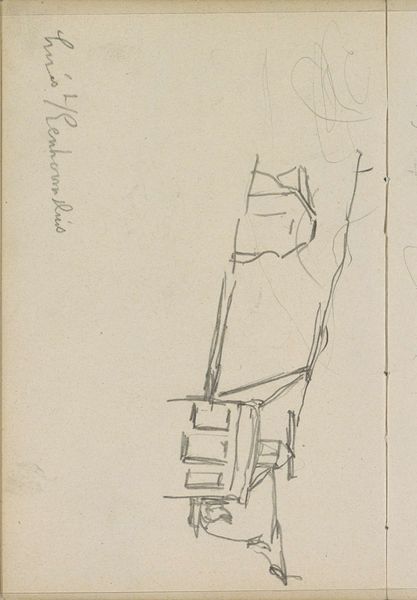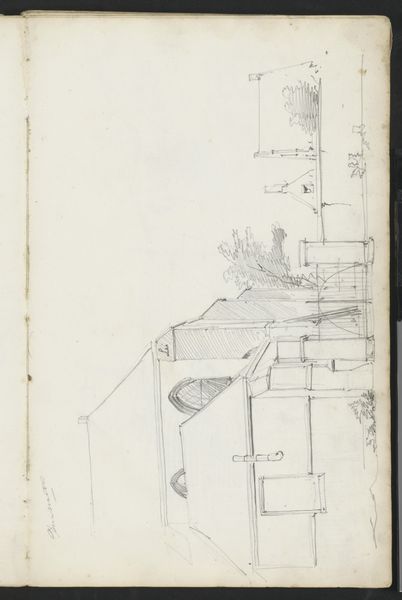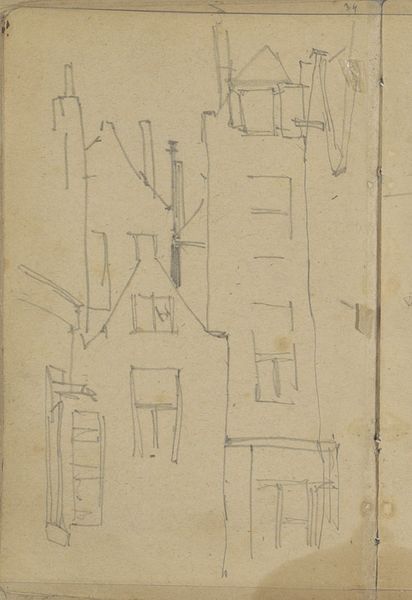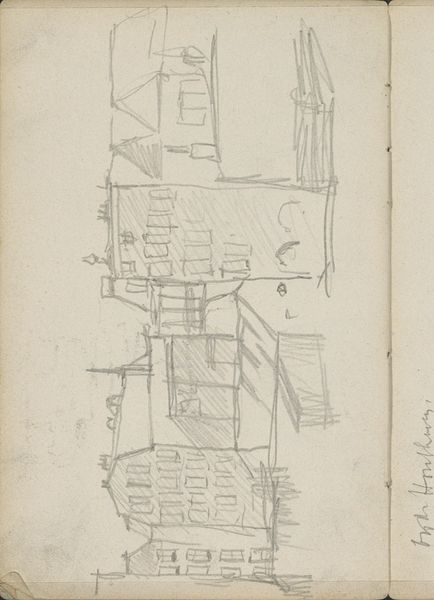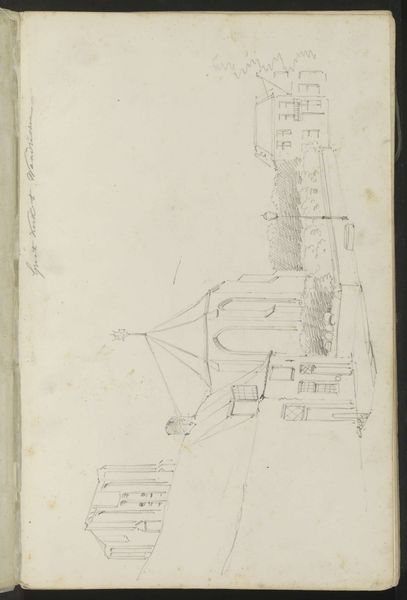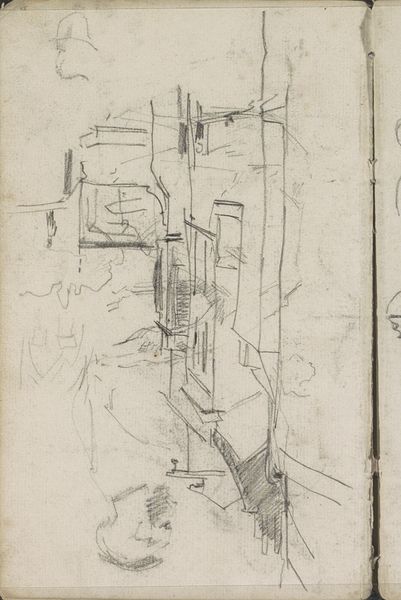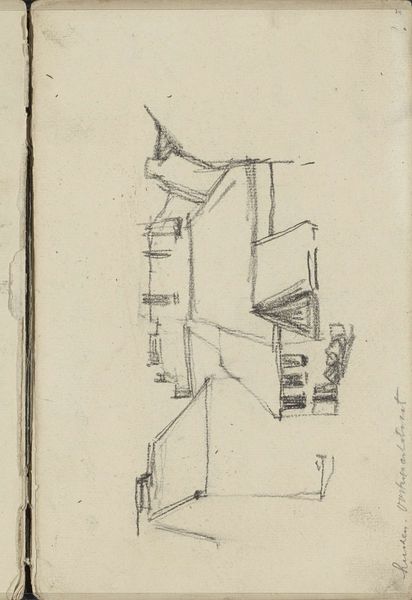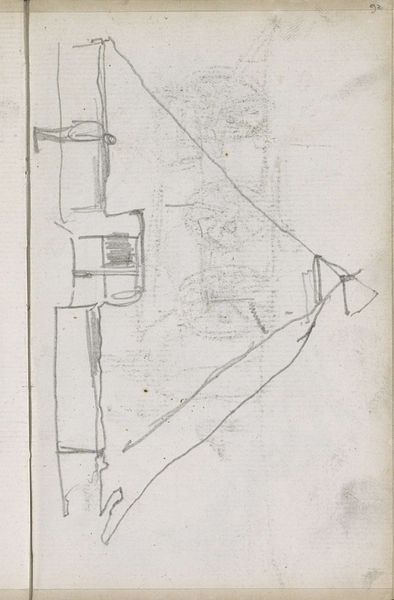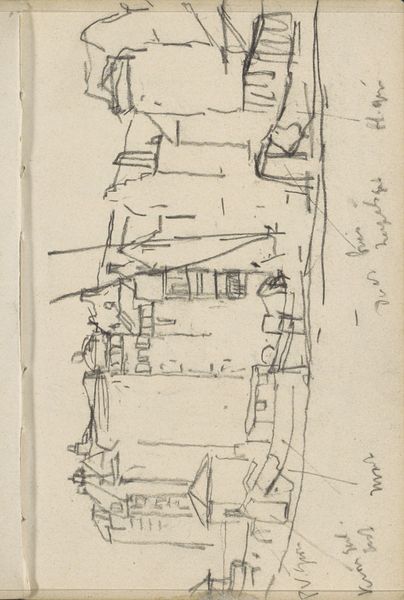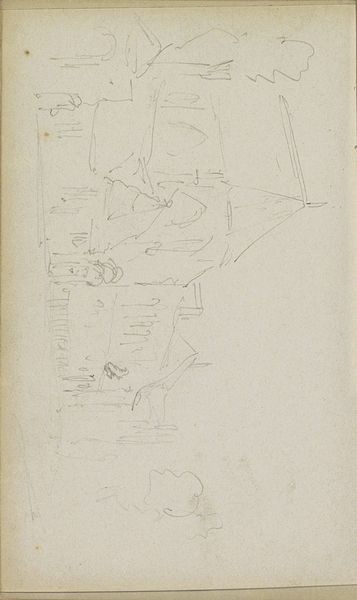
Copyright: Rijks Museum: Open Domain
Editor: This sketch, "Gezicht op een kade, mogelijk aan het Damrak," by George Hendrik Breitner, made around 1903, captures a scene on what seems like a canal using pencil on paper. It feels so raw and immediate. What do you see in this piece that maybe I'm missing? Curator: Well, beyond its immediate impression, it offers a glimpse into the rapidly changing urban landscape of Amsterdam at the turn of the century and how that affected different people. Think about the Damrak, then the city's port. How did this modernization impact labor, trade, and even social hierarchies? Editor: So, it's not just a pretty picture, it's a historical document, almost like a form of visual activism? Curator: Precisely. Breitner wasn't just sketching a scene; he was capturing a moment of immense transformation, a transformation that dramatically altered the lives of those who lived and worked there. Consider how industrialization often leads to displacement and changes in community structures. Does this drawing offer any clues about that? Editor: I see the hustle and bustle, the activity. Perhaps the quick, loose strokes suggest a sense of impermanence or disruption? The perspective almost seems to suggest he was capturing a clandestine moment. Curator: Exactly. And who benefits from that kind of rapid change, and who is left behind? Those are the questions this sketch, and Breitner’s larger body of work, invites us to consider. What narratives are often erased or overlooked when we focus solely on progress? Editor: I never considered how a simple sketch could open up such a complex discussion. I see the artwork in a new light, thinking of urban development in terms of social justice and lived experience. Curator: It's about recognizing that art is always intertwined with the social and political context in which it’s created and received. Even a sketch can reveal so much if we look closely.
Comments
No comments
Be the first to comment and join the conversation on the ultimate creative platform.

